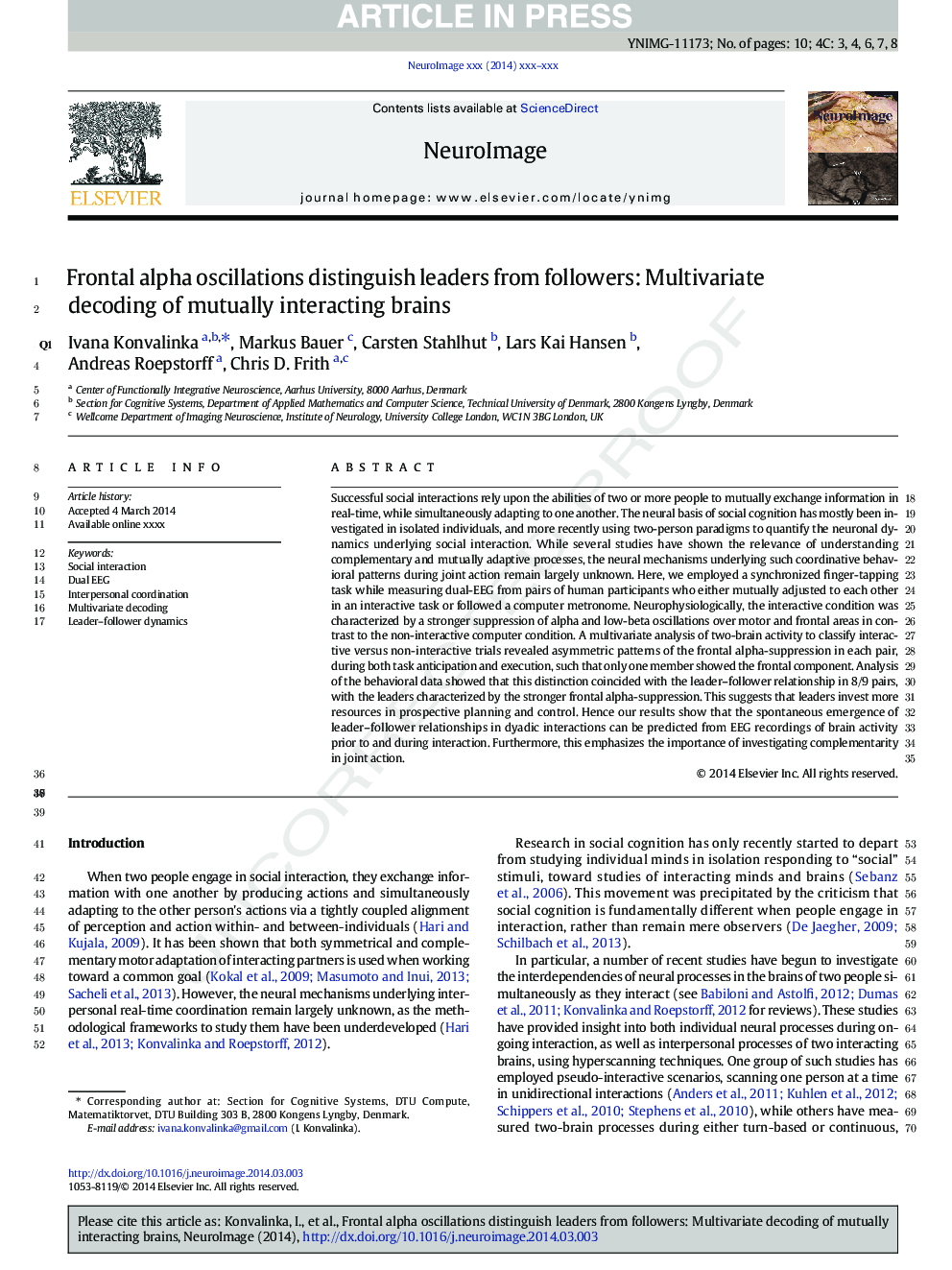| کد مقاله | کد نشریه | سال انتشار | مقاله انگلیسی | نسخه تمام متن |
|---|---|---|---|---|
| 6027491 | 1580912 | 2014 | 10 صفحه PDF | دانلود رایگان |
عنوان انگلیسی مقاله ISI
Frontal alpha oscillations distinguish leaders from followers: Multivariate decoding of mutually interacting brains
ترجمه فارسی عنوان
نوسانات آلفای فرابریک رهبران از پیروان را تشخیص می دهند: رمزگشایی چند متغیره مغز متقابل
دانلود مقاله + سفارش ترجمه
دانلود مقاله ISI انگلیسی
رایگان برای ایرانیان
کلمات کلیدی
موضوعات مرتبط
علوم زیستی و بیوفناوری
علم عصب شناسی
علوم اعصاب شناختی
چکیده انگلیسی
Successful social interactions rely upon the abilities of two or more people to mutually exchange information in real-time, while simultaneously adapting to one another. The neural basis of social cognition has mostly been investigated in isolated individuals, and more recently using two-person paradigms to quantify the neuronal dynamics underlying social interaction. While several studies have shown the relevance of understanding complementary and mutually adaptive processes, the neural mechanisms underlying such coordinative behavioral patterns during joint action remain largely unknown. Here, we employed a synchronized finger-tapping task while measuring dual-EEG from pairs of human participants who either mutually adjusted to each other in an interactive task or followed a computer metronome. Neurophysiologically, the interactive condition was characterized by a stronger suppression of alpha and low-beta oscillations over motor and frontal areas in contrast to the non-interactive computer condition. A multivariate analysis of two-brain activity to classify interactive versus non-interactive trials revealed asymmetric patterns of the frontal alpha-suppression in each pair, during both task anticipation and execution, such that only one member showed the frontal component. Analysis of the behavioral data showed that this distinction coincided with the leader-follower relationship in 8/9 pairs, with the leaders characterized by the stronger frontal alpha-suppression. This suggests that leaders invest more resources in prospective planning and control. Hence our results show that the spontaneous emergence of leader-follower relationships in dyadic interactions can be predicted from EEG recordings of brain activity prior to and during interaction. Furthermore, this emphasizes the importance of investigating complementarity in joint action.
ناشر
Database: Elsevier - ScienceDirect (ساینس دایرکت)
Journal: NeuroImage - Volume 94, 1 July 2014, Pages 79-88
Journal: NeuroImage - Volume 94, 1 July 2014, Pages 79-88
نویسندگان
Ivana Konvalinka, Markus Bauer, Carsten Stahlhut, Lars Kai Hansen, Andreas Roepstorff, Chris D. Frith,
